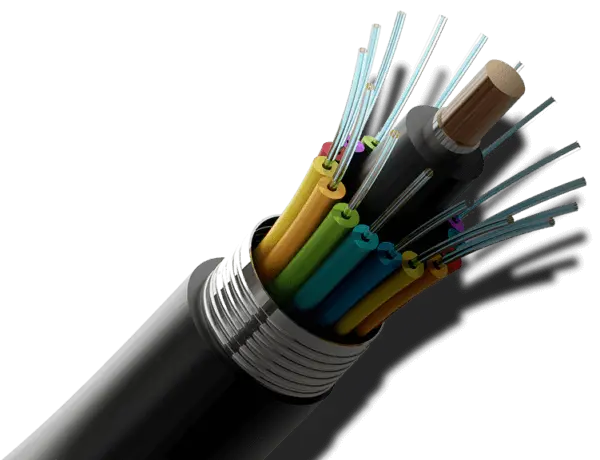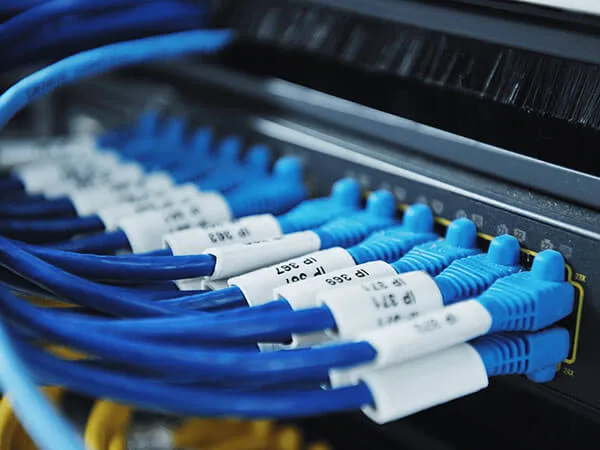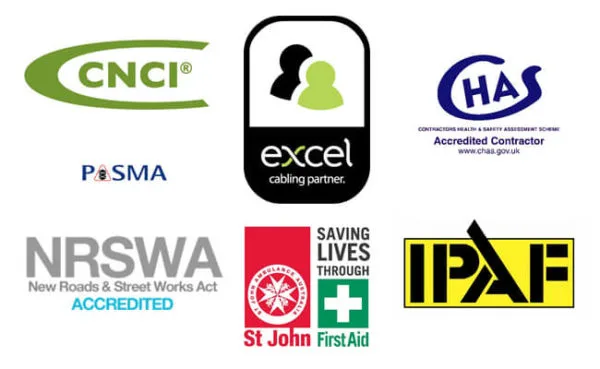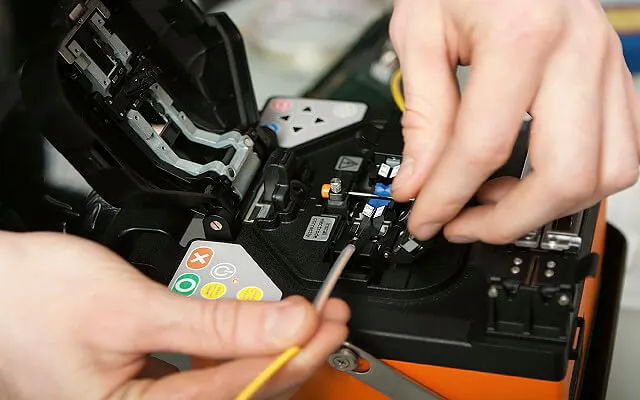
FIBRE OPTIC CABLING INSTALLATION
Experts in installing Fibre Optic data and voice network cabling
Our in house fibre optic cable installation engineers have a wealth of experience in carrying out optical fibre cable installations, diagnostics and repairs in the Hampshire, Surrey and West Sussex areas.
We supply and install fibre optic cabling for numerous purposes both internally for network backbones and externally for building to building links. Our longest installation so far is 2km underground but we are ready to tackle any size fibre optic cable project no matter how large or small.
We are so confident that our MOD trained fibre engineers will install to the highest quality and performance levels that we offer a 25 year manufacturer backed warranty on all fibre optic installations.
Our pre-sales technical engineers can assist you with the exact type of fibre optic cable to meet your requirements. This will be dictated by the distance and bandwidth required. So whether you need single mode or multimode connections we can help and advise so you get the right solution first time.

WHY CHOOSE PCL
All our Engineers are PIA (Physical Infrastructure Access) and NRSWA (New Road and Street Works Act) approved. All our Engineers must undergo our training programme, no matter the level of experience, this ensures Portsmouth Communications can ensure a consistent approach to quality and standards of work.
CUSTOMISED SOLUTIONS
FREE ESTIMATES
PROFESSIONAL TEAM

QUALITY SERVICE BACKED BY RECOGNISED STANDARDS
Portsmouth Communications is totally committed to its corporate social responsibility (CSR), we take pride in actively embracing commitment to continuous improvement; this being through every single aspect of our company, from our own people, through our respected suppliers, to our valued customers.
Health & Safety is at the forefront of our business when working in different environments, we are focussed and committed to improving our health and safety performance and subject all aspects of our work to rigorous safety audits. All our Engineers receive the appropriate Health & Safety training, regularly renewed to ensure continuous improvement.
TRAINING AND EXPERIENCE
Ensuring a consistent approach to quality and standards of work
Portsmouth Communications Engineers are trained in all aspects of fibre optic cabling. Our comprehensive training programme ensures all Engineers are adequately trained to deal with all fibre types, joints, chambers, cabinets and datacentre environments.
Our teams are fully equipped with fusion splicing and test equipment (including OTDR), roadside safety, risk assessments, camera equipment and all other appropriate tools.

TYPES OF FIBRE OPTIC CABLING
ADVANTAGES OF FIBRE
Talk to Us
Why not speak to our Technical Team about the Fibre Optic Cabling solutions available.
Prefer to talk to someone? Give our expert technical team a call and they will be happy to answer any and all of your fibre optic cabling related questions.
01329 235 050
This page is related to: data cabling Portsmouth, fibre cabling Portsmouth
